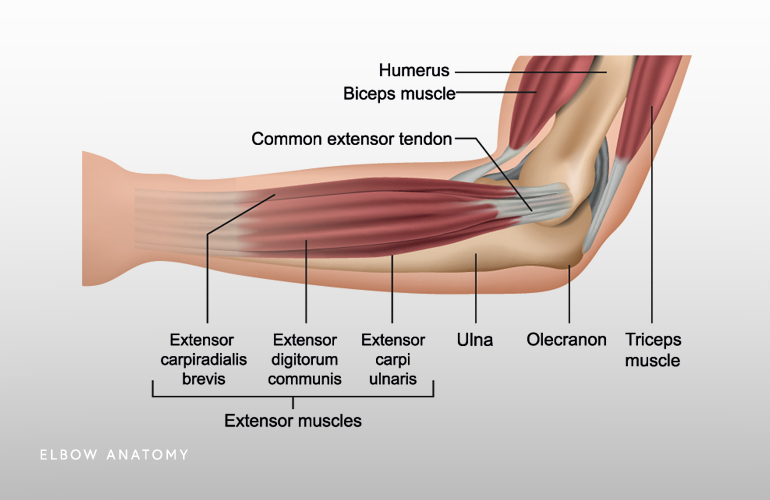Elbow Anatomy
An Overview on Elbow Anatomy
The elbow, located in the center of the arm, is one of the most used joints in the body. Elbow anatomy includes bones, ligaments, tendons, muscles and nerves that all work together to move and bend the arm. When one of these structures becomes injured, elbow pain can become a problem for many patients. Chicago, Westchester, Oak Brook and Hinsdale, Illinois area orthopedic elbow specialist, Dr. Nikhil Verma is well trained and experienced in treating a number of elbow injuries.
Elbow Anatomy

The elbow joint works with the shoulder and wrist to provide versatility and structure to the arm. The joint functions like a hinge type, synovial joint. The joint allows movement for flexion and extension of the forearm, as well as rotating and twisting of the lower arm.
The elbow is formed by three major bones. These bones include:
- Humerus: The largest bone of the arm that connects to the clavicle and scapula of the shoulder
- Radius: The bone that runs from the elbow to the thumb side of the wrist
- Ulna: The bone that runs from the elbow to the small finger side of the wrist
These three bones create two joints that make up the elbow. These joints include:
- Humeroradial joint: The meeting place of the humerus and radius that allows the arm to bend and straighten
- Proximal radioulnar joint: The meeting place of the radius and ulna that allows the lower arm to rotate
These two joints are held together by tough, flexible ligaments. The elbow ligaments play an important role in holding the joints together and preventing elbow injuries, leading to elbow pain. These ligaments include:
- Ulnar collateral ligament (UCL): The main stabilizer located on the inner side of the joint
- Radial collateral ligament: The ligament responsible for extension of the joint located on the outer side of the joint
- Annular ligament: The ligament functions to keep the head of the radius in contact with the radial notch of the ulna
Muscles, tendons and nerves compose the remainder of elbow anatomy. The triceps and biceps muscles are responsible for bending and straightening the arm at the elbow joint. The flexor and extensor muscles are responsible for finger and wrist movement. The two major tendons are the triceps and biceps tendon. The triceps tendon allows the joint to straighten and the biceps tendon allows the joint to bend. The major elbow nerve is the ulnar nerve. It is responsible for controlling the muscles of the hand and providing sensation to the small and ring fingers.
The elbow is constantly in use throughout the day during everyday activities, work and sports activities. The joint is prone to injury since it is placed under stress and pressure fairly easy. When injured, patients will experience elbow pain, swelling, tenderness and loss of motion.
Common elbow injuries include:
To learn more about elbow anatomy and the various causes of elbow pain, please contact the orthopedic office of Dr. Nikhil Verma, elbow specialist serving the Chicago, Westchester, Oak Brook and Hinsdale, Illinois communities.


